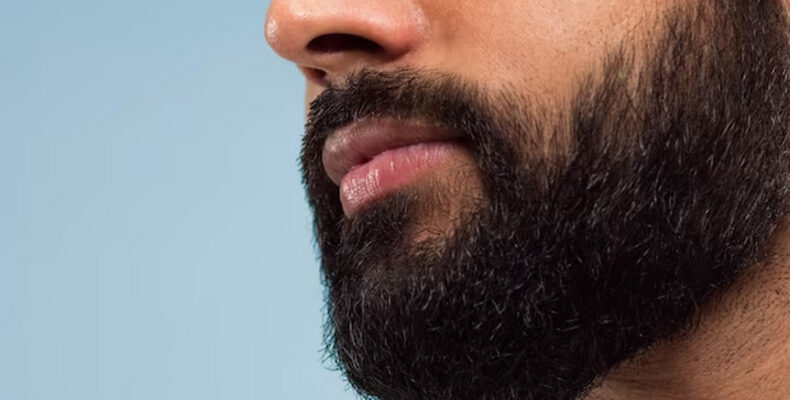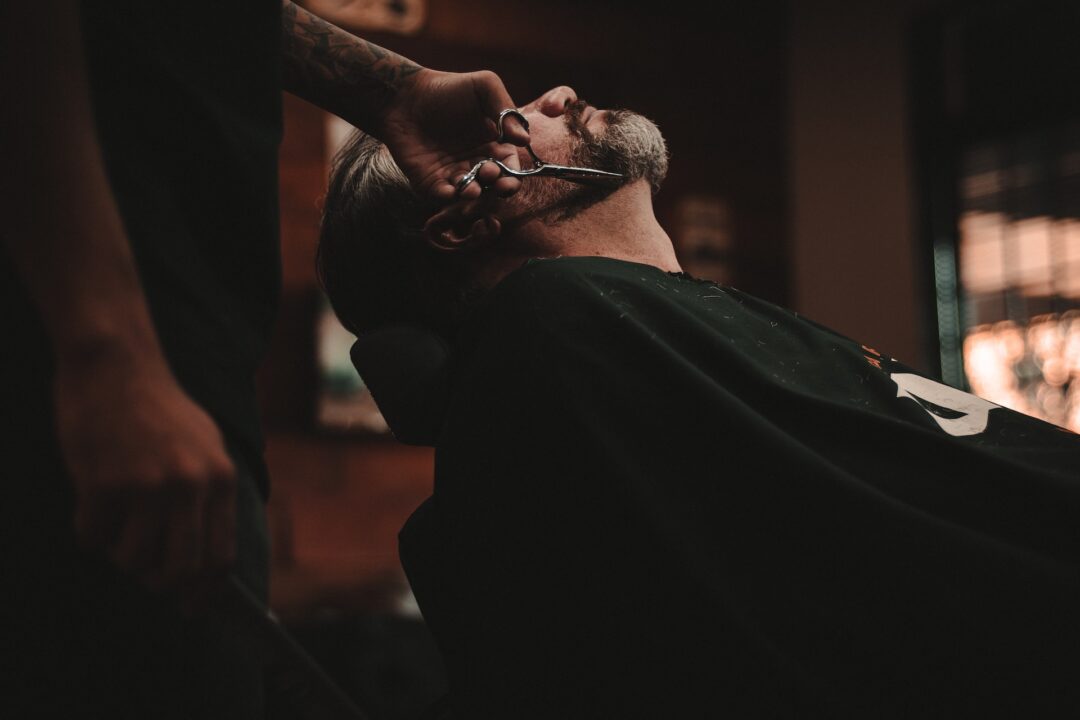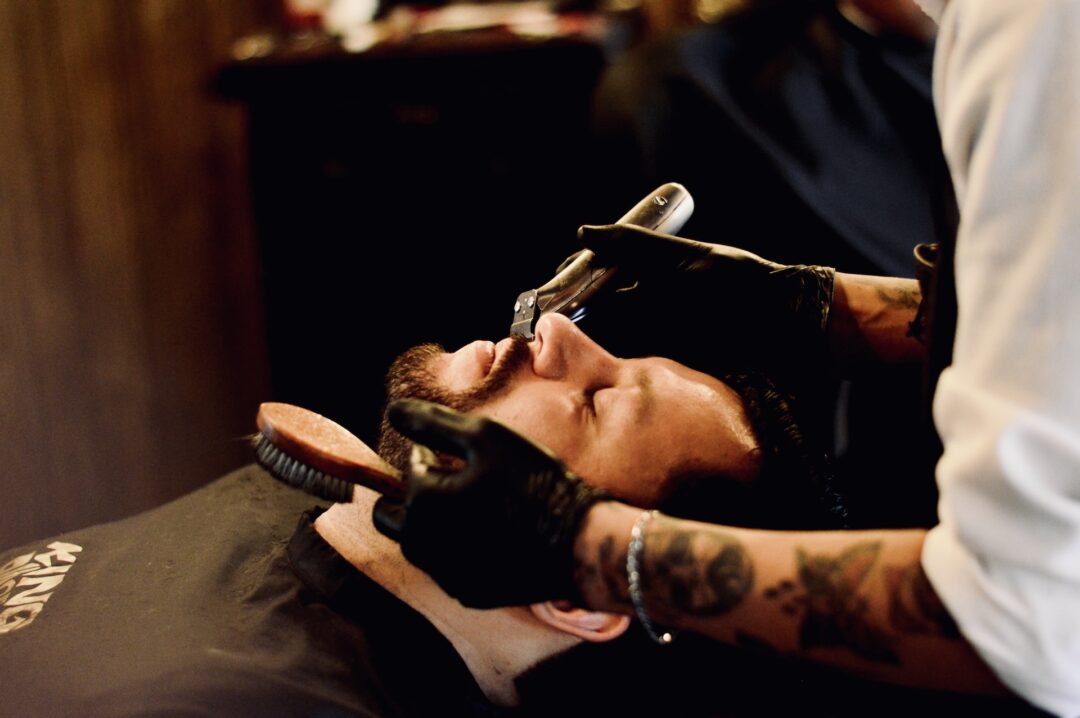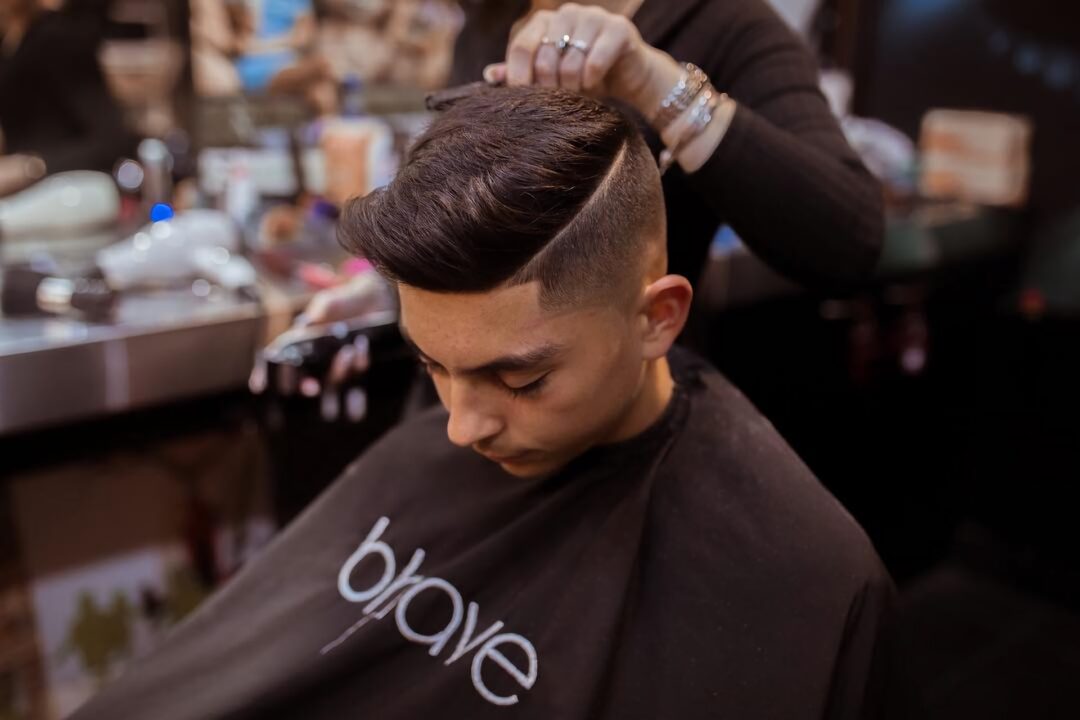Each man’s experience with growing a beard is distinct and personal. While some individuals are fortunate to possess a luxuriant growth of facial hair, others frequently contemplate methods to cultivate a more voluminous beard. An opulent mane is not solely determined by genetics; it comprises meticulous care, unwavering dedication, and profound knowledge. Let us explore extensively the realm of beards and uncover the mysteries of attaining the voluminous and denser facial hair that you have always yearned for.
Understanding Beard Growth Dynamics
To uncover how to make your beard grow fuller, we must first grasp what influences beard growth:
Genetics
Genetics play a significant role in determining the thickness and pattern of your beard growth. Here’s how it works:
- Inheritance: Your family lineage heavily influences your beard’s potential. If you have close relatives with thick, full beards, you are more likely to have the genetic predisposition for the same;
- Androgen Receptors: Genetics also impact the number and sensitivity of androgen receptors in your facial hair follicles. Androgens, like testosterone, are crucial for beard growth. Higher androgen receptor density can lead to denser beard growth.
Genetic Factors in Beard Growth
| Factor | Influence on Beard Growth |
| Family History | Strong |
| Androgen Receptor Density | Significant |
Testosterone Levels
Testosterone, the primary male sex hormone, plays a pivotal role in beard growth. However, simply having high testosterone levels doesn’t guarantee a thick beard. Other factors come into play:
- Dihydrotestosterone (DHT): Testosterone is converted into DHT, which is more potent and directly affects facial hair growth. Individuals with higher DHT levels tend to have thicker beards;
- Hormone Balance: Besides testosterone, a balanced hormonal profile, including estrogen levels, can affect beard growth. Imbalances may hinder or enhance beard development.
Hormonal Factors in Beard Growth
| Factor | Influence on Beard Growth |
| Testosterone Levels | Significant |
| Dihydrotestosterone (DHT) | Major |
| Hormone Balance | Moderate |
Age
Beard growth dynamics change over time, and age is a crucial factor to consider:
- Adolescence: Most men start to grow facial hair during puberty, typically between ages 13 and 16. Initially, it may be sparse and patchy;
- Early Adulthood: In the early 20s, beard growth tends to become denser and more defined as hormone levels stabilize;
- Maturity: As men age, usually in their 30s and 40s, their beards become more established and thicker. However, individual variations exist.
Age-Related Beard Growth Changes
| Age Stage | Beard Growth Characteristics |
| Adolescence | Sparse and Patchy |
| Early Adulthood | Denser and More Defined |
| Maturity | Established and Thicker (Varies) |
Nutritional Insights: Feed the Beard

Your diet significantly impacts how to grow a thicker fuller beard. A well-balanced intake promotes healthy hair growth:
Proteins
Proteins are the cornerstone of a robust beard. They provide essential amino acids necessary for hair growth and maintenance. Incorporating the following protein-rich foods into your diet can make a noticeable difference in your beard’s thickness and fullness:
| Food | Protein Content (per 100g) |
| Beef | 26g |
| Fish | Varies by type, but often 18-26g |
| Eggs | 13g |
| Legumes (e.g., lentils, chickpeas) | Varies by type, but often 6-9g |
Including these foods in your daily meals ensures your body has the raw materials it needs to produce strong, healthy beard hairs.
Vitamins
Certain vitamins, particularly B vitamins, are essential for promoting hair health and supporting beard growth. Here’s a breakdown of some key B vitamins and their dietary sources:
- Biotin (Vitamin B7): Biotin is renowned for promoting hair growth and preventing hair loss. You can find it in foods like nuts, seeds, and eggs;
- Niacin (Vitamin B3): Niacin improves blood circulation to hair follicles, aiding in beard growth. Whole grains, meat, and mushrooms are good sources;
- Pantothenic Acid (Vitamin B5): This vitamin strengthens hair follicles and can be found in avocados, lentils, and sweet potatoes;
- Cobalamin (Vitamin B12): B12 deficiency can lead to hair thinning. Include dairy products, fortified cereals, and seafood in your diet to meet your B12 needs.
Incorporating these vitamin-rich foods into your diet provides your body with the necessary nutrients for a fuller, thicker beard.
Zinc
Zinc is another vital component in your quest for a fuller beard. This mineral plays a crucial role in maintaining healthy hair follicles. Foods rich in zinc include:
| Food | Zinc Content (per 100g) |
| Spinach | 0.53mg |
| Pumpkin Seeds | 7.64mg |
| Dark Chocolate | 3.31mg |
Ensuring an adequate intake of zinc supports overall beard health and encourages thicker growth.
Iron
Iron deficiency can lead to hair loss and slow beard growth. Incorporate iron-rich foods into your diet to support your beard’s health:
| Food | Iron Content (per 100g) |
| Lentils | 3.3mg |
| Tofu | 2.7mg |
| Cashews | 6.7mg |
By regularly consuming these iron-rich foods, you can fuel your beard’s growth and maintain its thickness.
Healthy Fats
While proteins, vitamins, zinc, and iron are crucial, don’t overlook the importance of healthy fats. Omega-3 fatty acids, in particular, promote overall hair health. These fats can be found in:
- Fatty fish like salmon and mackerel;
- Flaxseeds and chia seeds;
- Walnuts and almonds.
Including these sources of healthy fats in your diet can enhance the quality and fullness of your beard.
Hydration
Staying hydrated is often underestimated in its role in beard health. Water is essential for overall bodily functions, including hair growth. Make sure you’re drinking an adequate amount of water daily to keep your beard well-hydrated and healthy.
The Role of Skincare in Beard Growth

A healthy and well-moisturized skin serves as a fertile ground for beard hair to grow. Here’s a step-by-step guide on how to make your beard grow fuller through proper skincare:
Cleansing
Cleansing your skin is the first step in creating an optimal environment for beard growth. Proper cleansing removes dirt, oil, and impurities from your skin, preventing clogged hair follicles that can hinder growth. Here’s what you should do:
| Step | Description |
| 1. | Use a gentle cleanser suitable for your skin type. Avoid harsh, drying soaps. |
| 2. | Wash your face twice a day – in the morning and before bedtime – to maintain cleanliness. |
| 3. | Gently massage the cleanser onto your face, paying extra attention to areas with sparse beard growth. |
| 4. | Rinse thoroughly with lukewarm water to avoid stripping your skin of natural oils. |
Exfoliation
Exfoliation is a crucial step that helps stimulate hair follicles by removing dead skin cells and promoting circulation. Make sure not to over-exfoliate, as this can irritate your skin. Here’s how to do it correctly:
| Step | Description |
| 1. | Employ a mild facial scrub or exfoliating cleanser once a week. |
| 2. | Apply the exfoliant in a circular motion, focusing on the areas with sparse beard growth. |
| 3. | Rinse thoroughly and pat your face dry with a clean towel. |
| 4. | Avoid excessive pressure or scrubbing, as it can damage your skin. |
Moisturizing
Keeping your skin hydrated is essential for beard growth. Dry, flaky skin can inhibit hair growth and lead to beard itch. Consider using beard oils or balms to moisturize your skin and facial hair effectively:
| Step | Description |
| 1. | After cleansing or exfoliating, apply a quality beard oil or balm to your facial hair and skin. |
| 2. | Massage the product in gently to ensure it reaches the hair follicles and underlying skin. |
| 3. | Choose a product with natural ingredients that provide both hydration and nourishment. |
| 4. | Use the moisturizer daily, especially if you have a long beard that requires extra care. |
Lifestyle Hacks for a Fuller Beard
It’s essential to understand the external factors that can influence beard growth. These factors can either promote or hinder the development of a fuller beard.
Stress Management
Chronic stress is a common enemy when it comes to hair growth, including beard growth. Elevated stress levels can disrupt hormonal balance and inhibit the hair follicles’ ability to thrive. To counter this, consider incorporating relaxation techniques into your daily routine:
- Yoga: Practicing yoga can help reduce stress by promoting relaxation and mindfulness;
- Deep-Breathing Exercises: Deep breathing techniques, such as diaphragmatic breathing, can calm your nervous system and reduce stress levels.
By managing stress effectively, you create a more conducive environment for your beard to grow in fuller and thicker.
Physical Activity
Regular exercise is not only beneficial for your overall health but also plays a crucial role in promoting beard growth. Here’s how it works:
- Cardiovascular Activities: Engaging in cardio exercises, such as running or swimming, increases blood circulation throughout your body, including your facial skin. Improved blood flow ensures that the hair follicles receive the necessary nutrients for robust growth.
Incorporating cardiovascular activities into your routine can enhance the quality and thickness of your beard.
Hydration
Proper hydration is fundamental for both your skin and beard. When your skin is adequately hydrated, it provides a nourishing foundation for beard growth. Here’s what you should do:
- Drink Water: Aim to consume at least eight glasses of water daily. Hydrated skin is less prone to dryness, flakiness, and irritation, which can hinder beard growth.
By maintaining proper hydration, you create an environment where your beard can flourish and grow fuller.
Limit Alcohol and Tobacco
While it’s no secret that excessive alcohol and tobacco use can harm your health, they can also negatively affect your beard growth. These substances can:
- Reduce Growth Rate: Excessive alcohol consumption can slow down the rate at which your beard grows, making it appear thinner;
- Compromise Hair Quality: Tobacco use can lead to poor hair quality, resulting in a less appealing beard texture.
To maximize your beard’s potential, it’s advisable to limit or eliminate alcohol and tobacco consumption.
Professional Interventions

If you’ve tried numerous methods on how to make your beard grow fuller without success, it might be time to consult professionals:
Dermatologist Consultation
Consulting a dermatologist can be a crucial step in your journey towards achieving a fuller beard. Dermatologists are medical professionals specializing in skin, hair, and nail health. They possess the knowledge and expertise to diagnose and treat a wide range of conditions that may be impeding your beard growth. Here’s a detailed look at how a dermatologist can assist you:
- Assessment and Diagnosis: Dermatologists can thoroughly examine your facial skin and hair follicles to identify any underlying issues that might be inhibiting beard growth. These issues could include conditions such as alopecia (hair loss), folliculitis (inflammation of hair follicles), or hormonal imbalances;
- Treatment Recommendations: Based on their assessment, dermatologists can recommend appropriate treatments or interventions. These may include:
| Treatment Type | Description |
| Topical Treatments | Dermatologists can prescribe specialized topical treatments designed to stimulate beard growth. These treatments often contain minoxidil, a medication known for promoting hair growth. |
| Medications | In some cases, dermatologists may prescribe oral medications or hormone therapies to address hormonal imbalances that affect beard growth. |
| Lifestyle Changes | Dermatologists can provide guidance on lifestyle modifications, such as dietary changes or stress management, that can support healthier beard growth. |
- Monitoring Progress: Throughout the treatment process, dermatologists will monitor your progress and make adjustments as necessary to ensure the best possible results.
Beard Transplants
For individuals truly committed to achieving a thicker and fuller beard, beard transplants represent a surgical solution. This procedure involves the precise extraction and transplantation of hair follicles from a donor area, typically the back of the head, to the facial area with sparse beard growth. Here’s a more comprehensive look at beard transplants:
- Consultation and Evaluation: The process begins with a consultation with a skilled surgeon who specializes in beard transplants. During this consultation, the surgeon will assess your facial hair growth patterns and discuss your goals;
- Donor Hair Extraction: Hair follicles are carefully extracted from the donor area using techniques such as follicular unit extraction (FUE) or follicular unit transplantation (FUT). These techniques ensure minimal scarring and natural-looking results;
- Recipient Site Preparation: The surgeon will create small, precise incisions in the facial area where you want to enhance beard growth. This step requires a high degree of precision to ensure the transplanted follicles align with the natural growth pattern;
- Transplantation: The extracted hair follicles are then transplanted into the recipient sites. This process is meticulous, and the surgeon strategically places each follicle to achieve the desired density and appearance;
- Recovery and Growth: After the procedure, there is a recovery period during which the transplanted hair follicles take root and start to grow. It’s essential to follow post-operative care instructions to optimize results;
- Results: Over time, the transplanted hair will continue to grow, giving you the fuller beard you desire. The final results may take several months to become fully visible.
Common Myths Debunked
Misconceptions about personal grooming and hair care abound, often passed down through generations. In this educational guide, we’ll debunk two commonly held myths: the idea that shaving makes hair grow back thicker and the belief that plucking gray hairs leads to more of them appearing. We’ll provide a detailed explanation of the science behind these myths and offer practical advice based on scientific evidence.
Myth 1: Shaving Makes Hair Grow Back Thicker
One of the most persistent myths is that shaving causes hair to grow back thicker and darker. This belief stems from the observation that shaved hair feels coarser when it begins to grow back. However, this coarseness is purely a matter of perception and has nothing to do with the actual hair structure.
When you shave, you’re cutting the hair shaft at its thickest point, creating a blunt edge. As the hair regrows, this blunt edge may feel rougher or coarser against the skin than the naturally tapered tip of unshaved hair. However, this does not alter the hair’s thickness, color, or rate of growth.
Debunking the Myth with Science:
- Hair thickness is determined by factors such as genetics and hormonal influences, not by the act of shaving;
- Shaving does not affect the hair follicle, which determines the thickness and color of the hair;
- Scientific studies have consistently shown that shaving has no impact on hair thickness.
Myth 2: Plucking Gray Hairs Makes More Appear
Another common myth is that plucking gray hairs will lead to an increased number of gray hairs appearing in the same area. This myth likely arises from the observation that as people age, they tend to develop more gray hairs naturally.
Gray hair occurs when pigment-producing cells in hair follicles gradually decrease their melanin production. Plucking a gray hair does not influence the underlying cause of graying, and it does not stimulate more gray hairs to grow in its place.
Debunking the Myth with Science:
- Gray hair is primarily a result of aging and genetics, not plucking;
- Plucking a hair follicle does not affect the surrounding follicles or influence their pigment production;
- New gray hairs will appear over time due to the natural aging process, with or without plucking.
Conclusion
A full, dense beard is a blend of nature, care, and knowledge. While genetics sets the stage, your commitment to understanding and nurturing your beard determines the final curtain call. As you embark on this journey of discovering how to grow a fuller beard, remember that patience, care, and persistence are your best allies.
FAQs
Q: Is there a ‘prime age’ for beard growth?
A: Most men experience peak beard growth from their mid-20s to late 30s. However, many continue to see changes and denser growth into their 40s and beyond.
Q: Does biotin supplementation help?
A: Biotin can support hair and nail health. However, always consult a physician before starting any supplementation.
Q: Can I train my beard to grow in a certain direction?
A: To some extent, yes. Regularly combing in the desired direction and using beard balms can help train your facial hair.



